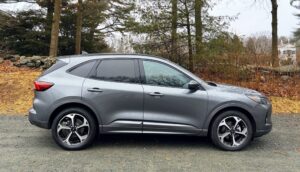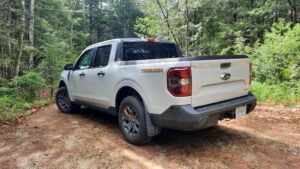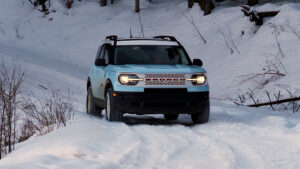A Look at Ford's Entry-Level Line Up.
I was recently listening to a popular automotive podcast where the hosts were fretting about the future of EVs and how a manufacturer’s use of a common ‘skateboard’ platform across their EV lineup will water down the performance of each model, essentially claiming that every car on that platform will drive the same.
But platform sharing is nothing new in the automotive world; it’s a logical way to cut costs while offering more affordable, brand-specific vehicles across a company’s product lineup. Sometimes, it is done badly—the Cadillac Cimarron is a prime example. Not surprisingly, a new grille and padded seats didn’t convince anyone to buy a fancy Chevy Cavalier.
Small cars like the Ford Focus and Fiesta are no longer available in the U.S. market. Ford moved away from cars years ago, adapting to changing consumer preferences by expanding its lineup to include a diverse range of vehicles, including SUVs, trucks, and electrified models. So, it’s not surprising that the three lowest-priced vehicles in the Ford lineup fall into the SUV or truck category, and all three share a common Ford C2 platform.
One of the key features of the C2 platform is its flexibility. It can accommodate various vehicle configurations, including front-wheel drive, all-wheel drive, and hybrid powertrains. This adaptability allows Ford to develop a diverse range of vehicles based on the same underlying architecture, helping to streamline production and reduce costs.
Featuring three distinctive personalities, the Ford Maverick, Escape, and Bronco Sport are shining examples of platform sharing done right. Recently, we had the rare opportunity to drive each back-to-back-to-back, which prompted me to consider each vehicle’s similarities and differences.
Let’s take a look at each one:
Ford Maverick Pickup | 2024 Starting Price $23,815
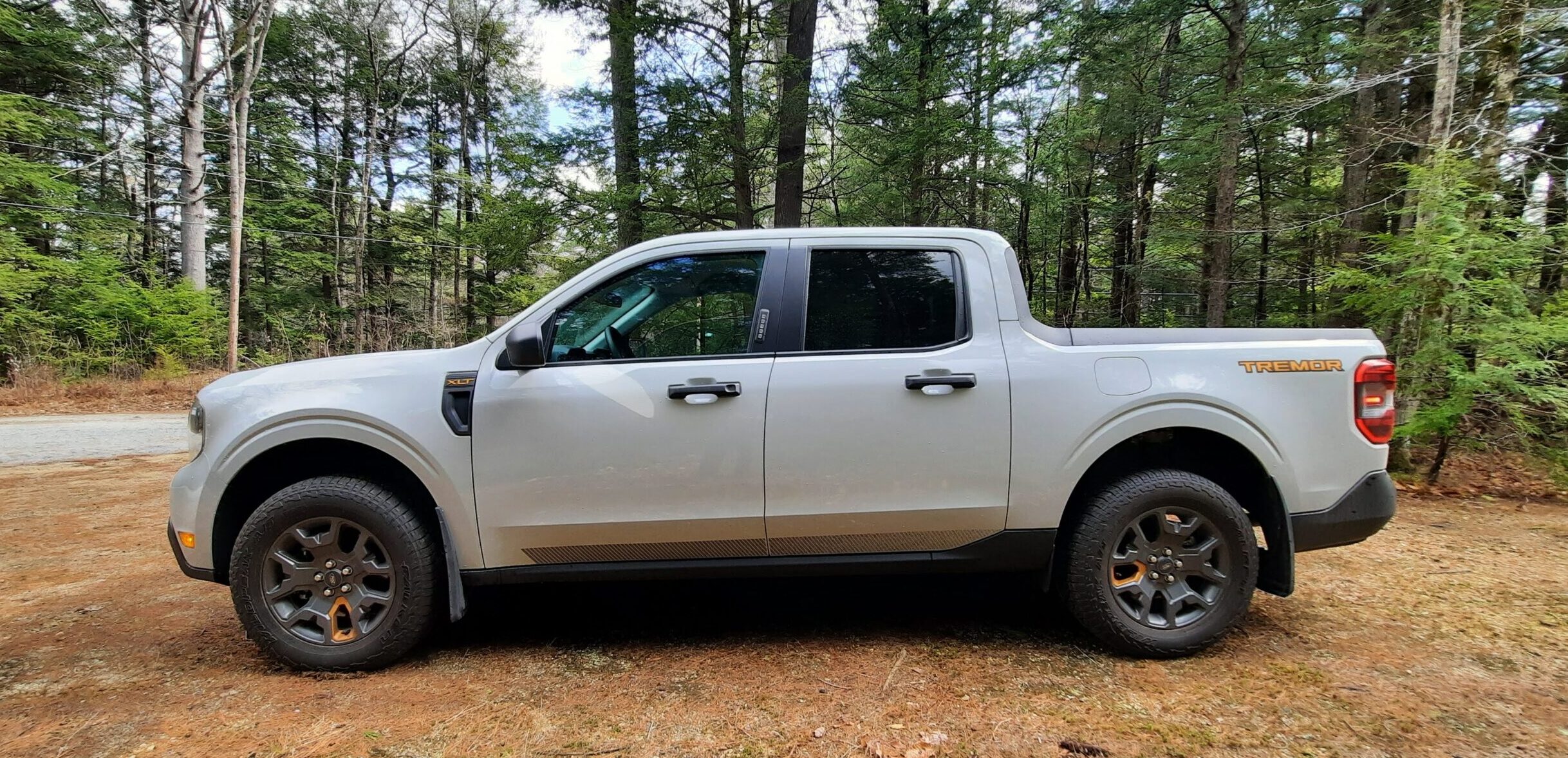
Starting from the cheapest to the most expensive, the lowest-priced vehicle in the Ford lineup is the incredibly popular Ford Maverick pickup truck.
When Ford debuted the Maverick, it came as a complete surprise on many levels, starting with the name. If you’re familiar with automotive history, you’ll know that the Maverick name originated as a ho-hum Ford compact sold from 1969 to 1977. Clearly, the new Maverick is not a continuation of that car, and while there have been a few different Maverick SUVs sold worldwide over the years, it’s not a name that anyone ever expected to see again in the U.S. market.
Frankly, it was a surprise that Ford was planning to build a compact pickup at all. I’ve been asking for years, where are the compact trucks? Mini trucks were not only cool, but they were remarkably efficient and handy as hell.
Another surprise for the Maverick was the price. Not only did it become the brand’s lowest-priced vehicle when it debuted in 2022; but you also got a hybrid powertrain as standard equipment, all for a mere $19,995 at the time. For thousands less than the cost of a Ford Escape, you had a cool-looking little truck with seating for 5, hybrid efficiency, and the ability to tow up to 4,000 pounds (with the EcoBoost engine). By comparison, the MSRP for the 2022 Ford Escape Hybrid was $30,185 at the time.
Of course, the base price of the Maverick has increased slightly since its debut in 2022, with the XL model now starting around $23,815. The 2.5-liter hybrid powertrain no longer comes standard on the XL; it will cost you an additional $1,500. While you may lose the efficiency of the hybrid, you do gain the additional power of the 2-liter EcoBoost engine. The 2.5-liter hybrid produces a system net 191 horsepower and 155 pound-feet of torque, while the 2-liter produces 250 horsepower and 277 pound-feet of torque. That’s nearly a 60 horsepower boost and an additional 122 pound-feet of torque—some might consider that a fair trade. On the other hand, the 42 mpg city rating on the Maverick hybrid is also quite attractive if you do a lot of stop-and-go city driving.
It’s no wonder that not only was the car-buying public surprised by the Maverick, but so was Ford who have been struggling to keep up with or increase demand since it launched.
After announcing a production boost at the Hermosillo plant during a 2023 annual shareholders call, Ford’s CEO expressed, “Unfortunately, we completely under-called the demand for Mavericks. So, I’m not confident even with the capacity increase that we’re going to have a lot of Mavericks available to everyone. We still have – look, we have a ten day supply of the vehicle. You can find Mavericks. The capacity increase will help, but clearly, the vehicles hit a really positive nerve, especially with the U.S. consumer. And we’re doing everything we can to increase, especially our supply chain, to increase the production.”
The Maverick had the misfortune of launching at one of the darkest times in recent automotive history and the ridiculous markups that dealers piled on were not helping. Some dealers were charging over $10,000 over MSRP, and one dealer in Chicago was caught charging over $20,000 on a Maverick Lariat Hybrid. That dealership later claimed to The Drive that the markup was a mistake. Even if it was, that doesn’t excuse the thousands of dollars that some dealers milked from their customers. It’s a wonder why manufacturers don’t do more to crack down on dealerships who engage in such practices.
I’d personally own a Maverick right now if not for the mark-ups, but there’s no way I am paying extra for a car that won’t be worth that additional cost when the time comes to trade it in. In fact, as I write this, I’m still seeing local dealers selling over MSRP. In the end, I bought something else, but I’ll still look at the Maverick again when I buy the next vehicle.
I sympathize a bit with people who paid well over the list price for their cars, regardless of the brand they bought, because they will find themselves significantly upside down when they go to trade in. Just to be clear, I’m talking about regular cars, not ridiculously marked-up specialty cars like a Hellcat, C8 Corvette, or Civic Type-R. Mark-ups mean nothing to a person who can afford an $80,000 toy; it’s the people paying extra for a lower budget ‘get-around’ car in the $20,000-$25,000 range who can’t shake it off so easily.
Auto sales are expected to slow down a bit this year, so the same dealers who profited in 2022 will likely be emailing customers, urging them to trade in cars that they can’t trade in because they owe significantly more than the car is worth.
Car buying drama aside, Maverick prices are returning to normalcy, making it a great buy. However, it’s advisable to check with various dealerships to ensure you’re getting the best deal. If needed, consider going out of your way to support dealerships that prioritize fair pricing and don’t take advantage of the situation.
Ford Escape | 2024 Starting Price $29.495
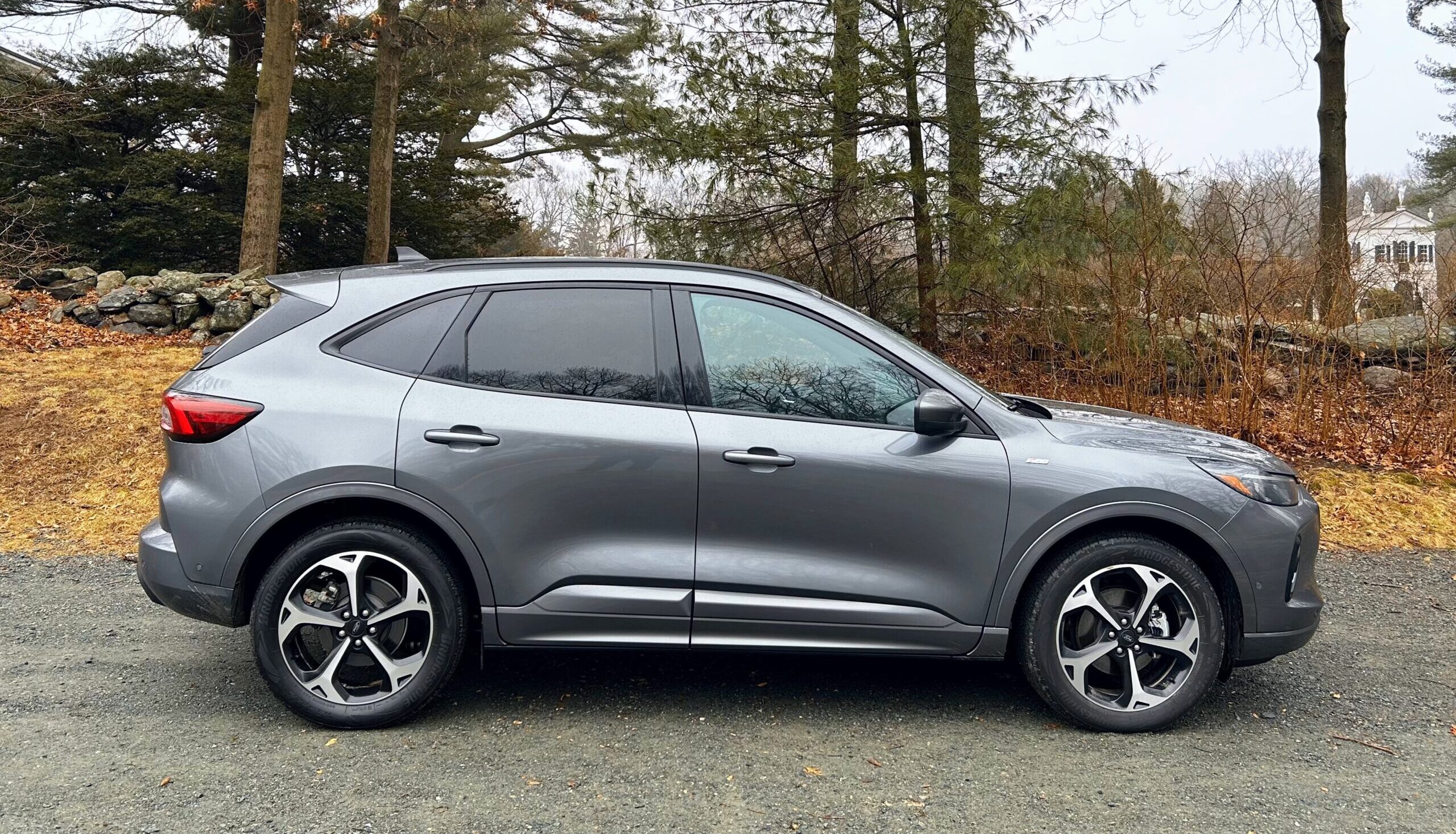
Given the current market trends, It’s not unexpected that Ford’s 2nd least expensive vehicle comes in the form of a compact SUV. While many SUVs are embracing boxy and adventurous designs, the Ford Escape takes a different approach by emphasizing its sporty characteristics.
“Not every customer wants a rugged and boxy SUV, so we’ve made the new Escape more energetic, confident and sleeker,” said Amko Leenarts, director, of Ford Design.
This commitment to athleticism is evident in the 2023 refresh, which introduces a more prominent grille positioned higher on the front fascia, accompanied by sharper LED headlights. The resulting look is much nicer looking than the Mazda-meets-Aston Martin styling of the outgoing model.
In addition to the sharpened styling, 2023 also saw the introduction of the Ford Escape ST-Line series, which further builds on the sportiness of the Escape by adding a black mesh grille and blacked-out exterior trim, a look that is quite popular with automakers at the moment. The ST-Line Elite, like the one that we drove, offers a coast-to-coast LED light bar that runs across the top of the grille. This definitely gives it a more modern, tech-savvy aesthetic.
Our ST-Line Elite also included available leather-trimmed seats featuring a quilted inset design and red contrast stitching. Despite their sporty appearance, these seats are quite comfortable, thanks to their well-cushioned construction.
The Escape is offered with a variety of trims and powertrains. The base Active trim includes turbocharged performance from a 1.5-liter 3-cylinder engine paired with an 8-speed automatic transmission. The 1.5-liter puts out 180 horsepower and 199 pound-feet of torque and comes paired with standard front-wheel drive, or optional All-wheel drive.
Moving up to either the ST-Line Select, ST-Line Elite, or Platinum trims gets you a larger 2-liter 4-cylinder EcoBoost engine delivering 250 horsepower. This engine is only available with all-wheel drive.
There are also two available Hybrid powertrains. An interesting side note, the Escape was the first hybrid SUV produced by an American auto manufacturer back in 2005. Also interesting to note that the 2005 Escape was indeed boxy and adventurous looking… go figure.
The standard hybrid system pairs a 2.5-liter 4-cylinder engine with PowerSplit Electronic continuously variable transmission, producing a system net 192 horsepower and 155 pound-feet of torque. No surprise, this system is the same as the one found in the Maverick, right down to the power ratings. Well, almost. The Escape gets 1 more horsepower than the Maverick does, why, I have no idea. Another curious difference between the two is the lack of an all-wheel drive option on the Maverick. You can order all-wheel drive on the Escape Hybrid, but not on the Maverick. That seems like an option that some Maverick owners would want. The Ford Escape hybrid variants get an EPA-estimated 42 city / 36 highway.
The Escape Plug-in Hybrid is more or less the same 2.5-liter hybrid system but with a larger battery and slight bump in power at 210 net horsepower. The benefit of the PHEV of course is the all-electric range. The 2023 Ford Escape PHEV was able to travel up to 37 all-electric miles on a full charge and got a combined city/highway rating of 40 mpg when using gasoline only.
Although Ford hasn’t released official fuel economy ratings for the 2024 model, it’s reasonable to assume that it won’t change much, if at all from 2023.
Ford Bronco Sport | 2024 Starting Price $31,230
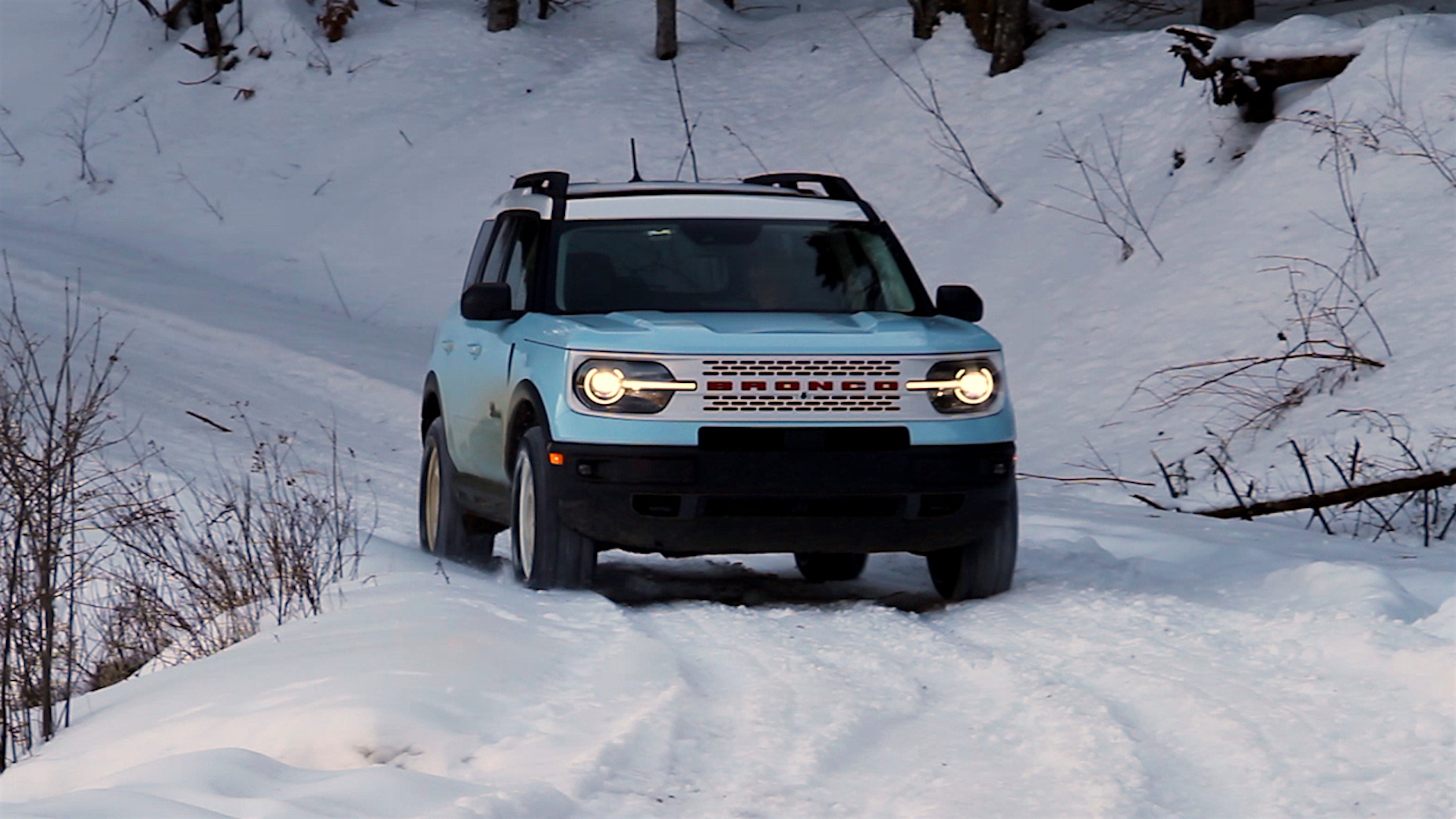
Technically, the third most expensive vehicle in Ford’s fleet is the Mustang, but the Mustang lives in its own world and has a completely different use case and buyer pool than the Maverick, Escape, and the last vehicle on our list, the Ford Bronco Sport.
While the Ford Escape shies away from the ‘adventurous’ SUV design trend, the Ford Bronco Sport unapologetically embraces it. After all, naming a vehicle after one of America’s most renowned off-roaders demands the capability to, well, go off-road. Don’t get me wrong, the Bronco Sport won’t conquer the Rubicon Trail; for that, you’ll have to move up to the regular Bronco. The Bronco Sport will handle most off-pavement situations, including a bit of snow as I recently found out.
The Bronco Sport made its debut in 2021 alongside the full-size Bronco as part of the “Bronco family”. While the full-size Bronco received – and continues to receive – the lion’s share of attention, the Bronco Sport is the vehicle most people can and likely will buy.
The Bronco Sport lineup mirrors that of its larger counterpart, starting with the base Big Bend, retro-inspired Heritage and Free Wheeling editions, Outer Banks, and Badlands.
The styling of the Bronco Sport also reflects that of the regular Bronco, but it’s not merely a shrunken-down copy. While it borrows numerous design cues, it possesses its own distinctive personality. The most significant difference lies in the roof, which is non-removable unlike the Bronco, but features a raised safari-style design. The upright roof, short overhangs, and rounded wheel openings with black fender flares contribute to its genuinely adventurous look. From certain angles and with the right color combination, the Bronco Sport evokes a more baby-Land Rover vibe than a baby-Bronco one. It’s worth noting that paint color also plays a role; I’ve observed that black paint for explain somehow mutes the styling.
Speaking of colors, the Bronco Sport does offer a great color palette to choose from including classic Ford Oxford White, Desert Sand, and a rich Atlas Blue color that looks pretty high-end, especially when paired with a darker roof color. And because the monochromatic look is all the rage with buyers, the Bronco Sport also offers an optional Black appearance package with a blacked-out two-tone grille, Matte Black wheels, and a painted shadow black roof. The Black Appearance package is a great contrast to any of the Bronco Sport’s Colors.
There are also two retro-inspired trims with their own unique colors: the Bronco Sport Heritage Edition and the Bronco Sport Free Wheeling Edition.
The Heritage pays homage to the original 1966 Bronco, a no-frills utility vehicle with its signature white grille adorned with red lettering. Ford has done an excellent job of reincorporating this vintage styling, which not only feels right at home on the Bronco but also complements the Bronco Sport, especially when paired with the classic Robin’s Egg Blue color like the one we drove recently. The Heritage package also includes matching white 10-hole wheels, which remind me more of the 80s Foxbody Mustang than the Bronco, but I dig them.
While the Heritage pays tribute to the 1960s, the Bronco Sport Free Wheeling edition channels the ‘free-wheeling’ styling of the 70s through its silver-painted grille and vibrant, boldly colored stripe package. These striking stripes extend beyond the exterior, as the Free Wheeling also features cloth seats with matching sunset weave cloth.
The Bronco Sport also offers a wide variety of factory accessories with a focus on outdoor adventure. Under-body Off-Road Protection is optional, but for some reason cannot be paired with the Black Appearance package. Additionally, buyers have the option to choose from two different styles of fender flares, along with mud flaps.
For camping enthusiasts, Roof-Rail crossbars are available to accommodate additional gear, while an optional Liftgate Privacy Curtain transforms the liftgate into a small tent.
There’s also an optional cargo management system with a combination pull-out table, shelf, and divider. Ford also offers an interior bike rack that allows you to store two bikes inside as opposed to leaving them out in the open and a console-mounted safe to secure belongings while you’re out on the trail.
Inside, the Bronco Sport comfortably accommodates five passengers. Seat trim varies according to the trim level: the base model offers easy-to-clean cloth seats, while the Heritage trim boasts stylish plaid cloth seats reminiscent of the 1960s. Moving up to the Outer Banks trim, you’ll find premium-trimmed seats, whereas the Badlands trim elevates the experience with perforated premium two-toned seats.
All trims of the Bronco Sport come equipped with Ford’s SYNC 3 system, featuring an 8-inch touchscreen and Apple CarPlay and Android Auto smartphone integration. A voice-activated Navigation System is optional. Ordering the Navigation system on the base model also requires the addition of Ford Co-Pilot360 Assist+. This package includes Intelligent Adaptive Cruise Control with Stop-and-Go and Lane Centering, Speed Sign Recognition, Evasive Steering Assist, and SiriusXM Traffic and Travel Link with a three-month prepaid subscription. Considering the added features, it’s quite a bargain for just an additional $645.
Although a hybrid powertrain isn’t available for the Bronco Sport, it does utilize the same conventional gas engines as the Escape, starting with the turbocharged 1.5-liter EcoBoost 3-cylinder engine. Only the top-tier Badlands trim gets a 2-liter Ecoboost 4-cylinder engine. Both engines come paired with an 8-speed automatic transmission and standard four-wheel drive.
Although a hybrid powertrain isn’t an option for the Bronco Sport, it does utilize the same conventional gas engines as the Escape. This includes the turbocharged 1.5-liter EcoBoost 3-cylinder engine as standard. Only the top-tier Badlands trim receives an upgrade to the 2-liter EcoBoost 4-cylinder engine. Both engines come paired with an 8-speed automatic transmission and standard four-wheel drive.
Because it’s a Bronco, you also get Ford’s G.O.A.T Modes, an acronym for Goes Over Any Type of Terrain. Which I guess is actually G.O.A.T.T, but don’t tell them that. On the lower trims, selectable drive modes include Normal, ECO, Sport, Slippery, and Sand. The Badlands adds settings for Mud/Ruts and Rock Crawl.
Ground clearance varies across different trims of the Bronco Sport. Base and Big Bend models offer 7.8 inches of ground clearance, while the Outer Banks trim provides a slightly higher clearance of 7.9 inches. For those seeking even more capability, the Badlands offers 8.6 inches of ground clearance, which can be increased to 8.8 inches with the optional All-Terrain Off-Road Tires.
No matter what path (or trail) that life takes you down, Ford offers three entry-level vehicles that are definitely worth considering, whether it’s for their capability, styling, or spirit of adventure.

